Mountain Feist Breed Information
The Mountain Feist is a dog breed with deep American roots, offering an exciting topic for dog lovers and history buffs. These dogs come from the rugged Appalachian Mountains, bred out of need for their hunting skills with small animals.
Mountain Feists may be small, but they’re quick, full of energy, and intelligent, with a strong will. They can fit into many homes because they adapt well and are faithful to their owners.
Looking past their essential traits and practical beginnings, the Mountain Feist has a depth that’s worth a closer look. As we examine these dogs, from how they look to how they behave, we’re reminded of how a breed’s history shapes its role today.
Key Takeaways
- Mountain Feist is a small to medium-sized dog breed known for its hunting abilities, particularly in hunting squirrels.
- They originated from the Appalachian region of the United States and are highly energetic, requiring plenty of exercise and mental stimulation.
- These dogs have a short, sleek coat that comes in various colors and are adaptable to different living situations, thriving in both urban and rural environments.
- Mountain Feists are highly affectionate and form strong bonds with humans, but they require training, regular exercise, and social interaction to be healthy and well-behaved dogs.
Quick Facts
The Mountain Feist is a small to medium-sized dog breed known for its skill in hunting, especially squirrels. This breed comes from the Appalachian region of the United States. It’s known for being energetic and needing plenty of exercise and mental stimulation. This is because they were initially reinitializing. They have short, sleek coats in various colors, which helps them blend in when hunting in the woods.
Mountain Feists are good at adapting to different living situations. They can live happily in a family home if they get enough physical activity, mental challenges, and social interaction. These dogs typically live for 10 to 15 years. Potential owners need to know that training and regular exercise are vital to keeping a Mountain Feist healthy and well-behaved.
Mountain Feist Pictures
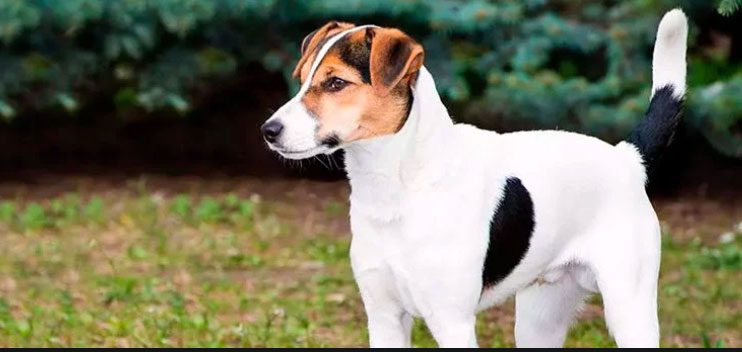
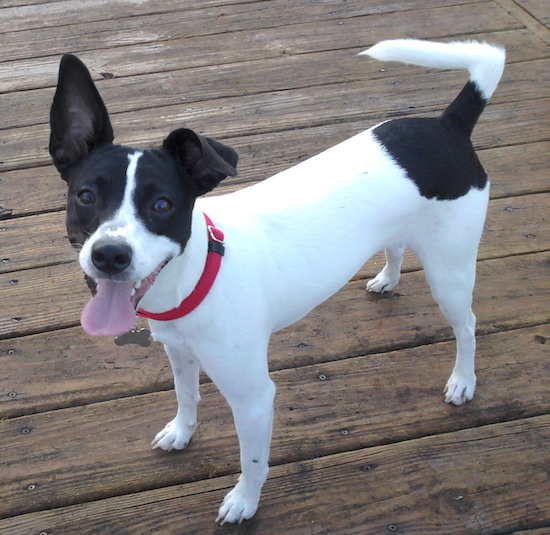
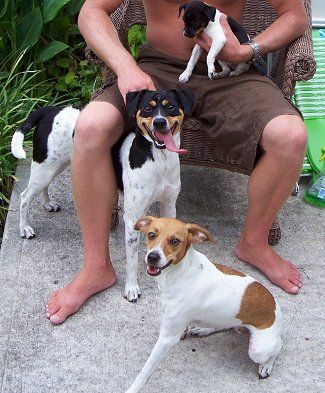
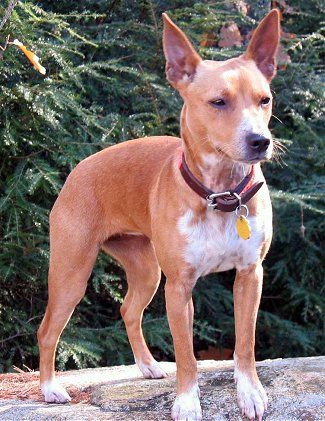
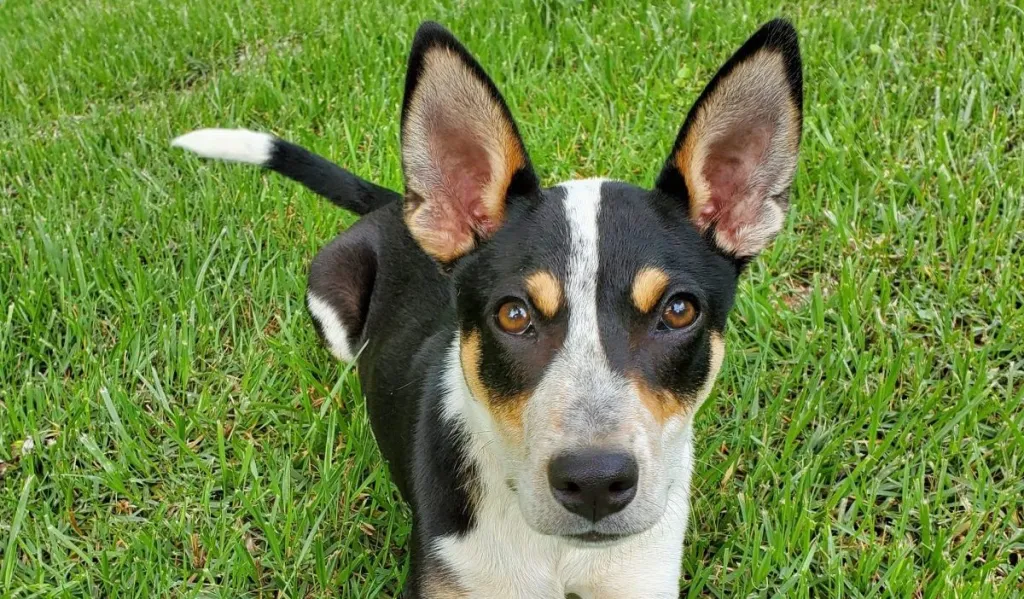
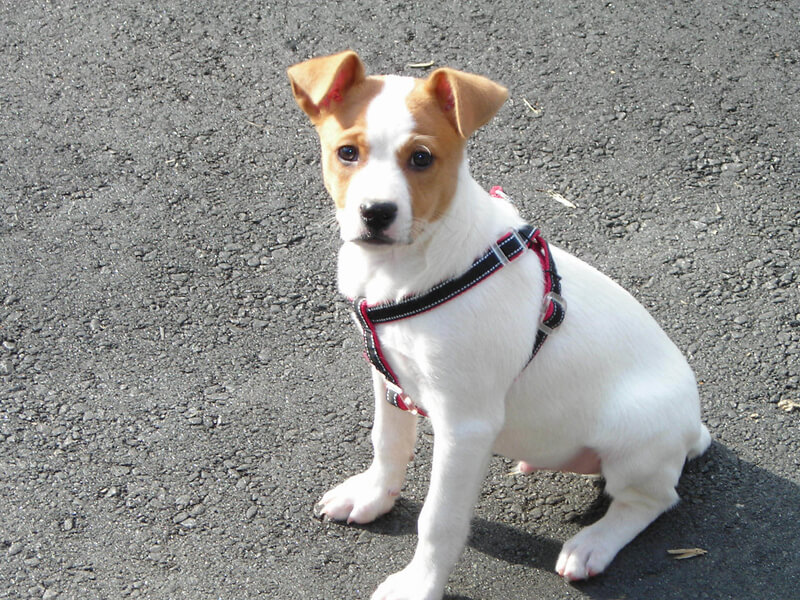
Overview
Building on the foundational knowledge of the Mountain Feist’s characteristics, an in-depth overview reveals the breed’s adaptability to various environments, alongside its distinct behavioral and physical attributes.
Originating from the Appalachian Mountains, the Mountain Feist Dog exhibits remarkable versatility, thriving in both urban and rural settings. This breed’s high energy and exercise requirements stem from its hunting lineage, necessitating a lifestyle that accommodates its vigor. Despite its potential as an apartment dog, the breed’s inherent qualities require a commitment to meet its activity needs to prevent undesirable behaviors.
In assessing compatibility, the Mountain Feist’s affectionate disposition and ability to form strong bonds with humans make it a valuable addition to families. At the same time, its health, grooming, and dietary considerations underscore the importance of informed care for its well-being.
Mountain Feists Key Traits
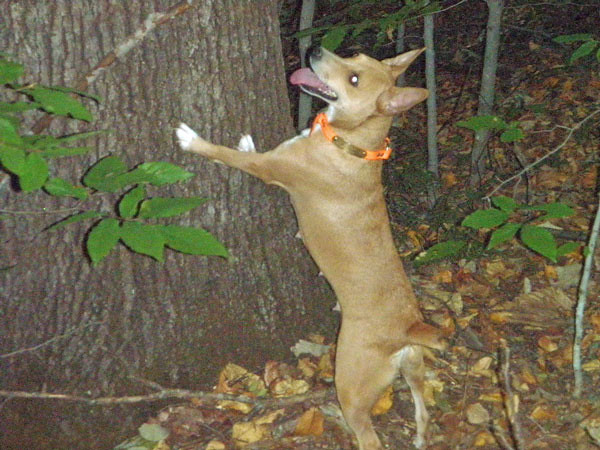
Mountain Feists are recognized for their agility, endurance, and intelligence. These traits come from their history of hunting in the Appalachian Mountains. Scientifically, they are known for their intense prey drive and high energy levels. This means they need a place to live that lets them be active both in body and mind.
| Trait | Description | Relevance |
|---|---|---|
| Size | Small to medium | The key to health and controlling energy |
| Coat | Short, smooth, various colors | Easy to groom |
| Adaptability | The key to health and controlling energy | Flexible living situations |
| Exercise Need | Needs daily activities | The key to health and preventing energy |
| Prey Drive | Natural hunting instinct | Must be watched around smaller animals |
Mountain Feists are great family pets due to their versatile nature and friendliness. However, they need regular exercise and oversight to reach their best potential.
Origins and Development
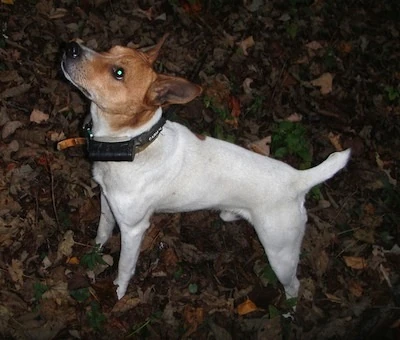
The Mountain Feist dog has roots going back to the early settlers of North America. These dogs were vital for both hunting and day-to-day life on the farm. Through careful breeding, the Mountain Feist became a skilled hunter, adept at navigating the challenging terrain of its home region. We can understand how this breed has changed and impacted rural communities by looking at historical documents and breed standards.
- Tracing the Breed’s Roots
- The Journey of Breed Development
- Impactful Historical Roles
The early ancestors of the Mountain Feist were integral to settlers for both companionship and work. As the years passed, breeders selected dogs for their hunting prowess and ability to adapt to the environment, molding the Mountain Feist into the dog we know today. This breed’s ability to perform in rough landscapes made it a favorite among farmers and hunters.
The breed’s evolution is documented through timelines showing breeders’ deliberate choices. These choices ultimately honed the Mountain Feist’s instincts and abilities. Recognizing the breed’s historical significance helps us appreciate the Mountain Feist’s role beyond being a pet. They were a part of the livelihood of rural communities, showcasing their versatility and endurance.
The contribution of the Mountain Feist to history is notable. They were not just hunting companions but also served as guardians of the homestead and helped control vermin populations. Their presence was a testament to their adaptability and usefulness in a time when dogs were chosen for their skills rather than just their appearance.
Early Breed Ancestry
The Mountain Feist dog breed has its roots in the American Southeast of the 1800s. It was specifically designed for hunting by mixing the traits of hounds with those of terriers. These dogs were made for the varied landscapes they would encounter in rural America.
They combine the stamina of their hound relatives with the terrier’s spirited nature. They are a small to medium breed with a smooth coat that helps them move quickly, which is critical when hunting and cornering small game.
The United Kennel Club officially recognizes the Mountain Feist, highlighting their importance in hunting and their versatility in both wild and domestic settings.
Breed Evolution Timeline
Reflecting on the early ancestry of the Mountain Feist reveals a timeline marked by selective breeding. This process led to the creation a versatile hunting companion skilled in navigating the diverse terrains of the American Southeast.
These dogs, a mix of terriers and hounds, were bred for their athleticism and ability to hunt. They are especially good at hunting small game, a skill highly valued in rural communities.
Although there’s no direct evidence linking the breed to historical figures like George Washington or Abraham Lincoln, the Mountain Feist’s development in the 19th century coincides with a time when such practical dogs were likely common in homesteads, supporting settlers and frontiersmen.
Notable Historical Contributions
Throughout history, the Mountain Feist has excelled as a hunter, especially in the challenging terrain of the Appalachian region where they originated. These dogs have been expertly bred to track and hunt squirrels, combining the keen senses of hounds with the boldness of terriers.
They have a slight to medium build and come in various coat colors, which helps them move quickly and adapt to forest environments. After nearly disappearing, dedicated dog lovers worked hard to bring the breed back, leading to its official recognition by the United Kennel Club in 2015.
This milestone highlighted the breed’s importance and secured its future as a hunter’s ally and a beloved family pet.
Physical Dimensions
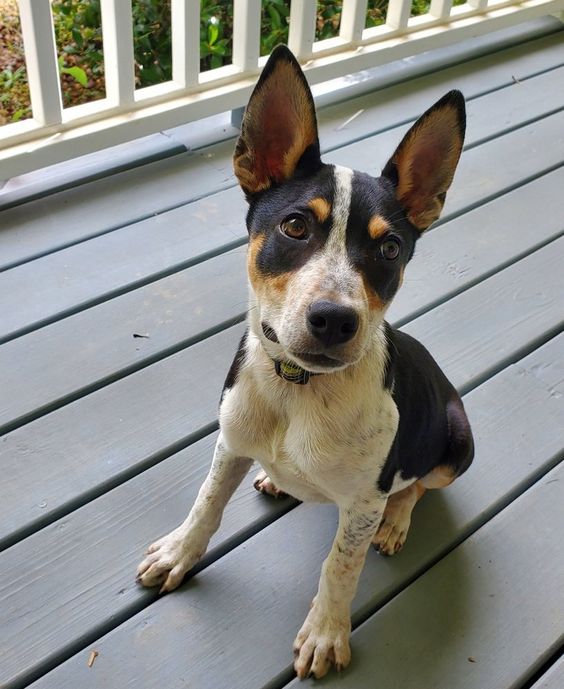
The Mountain Feist is a dog known for its versatility in hunting and graceful movements. These dogs stand anywhere from 10 to 22 inches tall at the shoulder, making them suitable for various terrains. Their weight falls between 10 and 30 pounds, which means they have a light enough build to move quickly but enough heft to be sturdy and robust.
Their bodies are slightly longer than they are tall, contributing to their agility. This proportion allows them to easily navigate through dense forests and over rocky landscapes, making them excellent companions for hunters targeting small game. Their size and structure are not just random; they’re critical to the brevitals ability to perform the jobs they were bred for.
Height Range
Mountain Feist dogs are small to medium-sized canines with a height that ranges from 10 to 22 inches at the shoulder. Their compact size is a key feature, making them quick and agile. These dogs can quickly move in different environments, from thick forests to tight city spaces. Their versatile build makes them great pets for various home settings.
While they may be small, Mountain Feists are solid and well-balanced, showing muscle and flexibility. This combination is perfect for their active lives and their history as hunting dogs.
Weight Classification
When we look at the Mountain Feist, we notice their weight range from 10 to 30 pounds. This places them in the small to medium category for dog sizes.
Their weight reflects their compact and agile nature, perfect for chasing down small games during a hunt. These dogs need regular exercise to keep them fit and prevent weight gain.
Keeping an eye on their diet and exercise is essential, especially since they can thrive in city and countryside settings. A good balance in their food and activity will help keep them healthy.
Body Structure
The Mountain Feist breed is known for its compact and sturdy build, which serves it well during hunting. These dogs are small yet firm, allowing them to chase after the game with vigor. They have a blocky head and a broad skull, with a solid muzzle resting on a muscular neck. This neck isn’t too long, making it easier for them to move quickly.
Their tails are high-set, which helps them look balanced and signals when focused on prey. Their paws might be tiny, but they’re tough, perfect for making sharp turns. Standing about 10 to 22 inches tall and weighing 10 to 30 pounds, these dogs are built for long periods of activity. They’re exactly what you’d expect from a breed used to hunting smaller animals.
Coat Length
The Mountain Feist dog is known for its sturdy build and coat that helps it thrive in many settings. These dogs have easy-care fur that comes in various colors and designs but is always short and sleek. The short coat is practical; it helps them move quickly through thick underbrush and makes grooming a breeze. Regular brushing is all it takes to keep their shedding under control and their coats healthy.
Even with their short fur, Mountain Feists prefer cooler weather but might need an extra layer, like a coat, in cold conditions. In contrast, when it’s hot, providing plenty of shade and water is essential to help them stay calm, given their coat’s low insulation ability.
Tail Description
The Mountain Feist has a tail that is usually upright or partially so, and it’s sized just right for its body. This characteristic helps the breed move with ease and maintain its balance.
The tail’s medium length is crucial to the Feist’s energetic nature and physical skills. Observations show that the tail’s position contributes to the dog’s attentive stance, especially when hunting.
The tail’s size is in sync with the Feist’s body, which is typically about 10-22 inches tall and weighs between 10-30 pounds. This balance is critical to the dog’s quickness and skill in navigating different types of ground, showing the breed’s natural development.
Temperament Traits
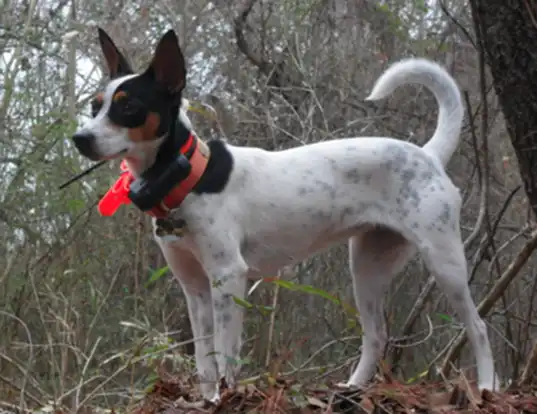
The Mountain Feist dogs are known for their lively nature and strong instinct to hunt due to their history as hunting companions. Addressing their distinct traits to raise a pleasant and balanced pet is essential.
Here’s how:
Owners must engage these dogs in regular and varied activities to channel their strong hunting instincts. Early socializing helps them become versatile and comfortable in different situations. Their training should be dynamic and consistent, emphasizing their eagerness to learn and vitality.
Handling these aspects of their behavior needs a planned approach. Combining their physical activity needs with ongoing, positive training is the key. This ensures they stay both physically fit and mentally sharp.
Prey Drive Management
Training Mountain Feists early on is critical to managing a strong prey drive. These dogs are natural hunters, keen on chasing and capturing small animals. Engaging in activities like playing fetch, practicing obedience, and doing scent work are beneficial to channel their energy positively. These activities satisfy their hunting instincts in a controlled environment.
Consistent training using positive reinforcement establishes clear boundaries for these dogs. It teaches them how to react when encountering animals they might see as prey.
It’s also important to be attentive when they’re outside. Using secure leashes or keeping them in safe enclosures can prevent them from chasing animals when they’re not supposed to. Taking these steps helps Mountain Feists live peacefully with other pets and wildlife.
Socialization Techniques
Training a Mountain Feist to manage their strong instinct to chase is essential. But it’s just as crucial to help them become well-behaved pets through socialization. They need to start meeting different people and experiencing new places early on. This helps them grow up mentally healthy.
Introducing them to new things gently helps them learn not to be scared. To be great family dogs, they must meet many people, including kids. When they act the way we want, giving them treats or praise helps them learn to be friendly and polite.
Training Responsiveness
Mountain Feists are energetic and independent, making persistent and structured training essential for teaching them to obey commands quickly. These dogs think for themselves, a trait they’ve developed from their history as skilled hunters.
Early training is crucial, focusing on socialization to make them more responsive. Using rewards like treats and praise works well to encourage good behavior.
It’s essential to keep their minds active to prevent unwanted habits. This can involve interactive games and puzzles as well as regular obedience lessons.
With consistent training, Mountain Feists can become great companions in any environment.
Energy Level Considerations
Mountain Feists are energetic dogs that need a lot of activity to stay healthy and happy. Without enough exercise, they might start acting out.
As an owner, you should take them on long walks, have them run, and play games that make them think and move a lot. Because these dogs like to hunt and check out new things, it’s good to give them a space that keeps them physically and mentally busy.
When a Mountain Feist gets plenty of playtime, they’re less likely to chew up your shoes or dig holes in the yard. Keeping them active is vital to avoid critical problems from their lively personalities.
Behavioral Correction Tips
Training them consistently and establishing boundaries early on is vital to change unwanted behaviors in Mountain Feists. A systematic approach is critical for these dogs, who thrive on stable and predictable routines.
Using rewards like treats and praise to encourage good behavior is beneficial. Also, due to their high energy, it’s essential to have physical and mental activities to prevent any issues. Challenging their minds and using their energy can significantly decrease their chance of acting out.
It’s also important to start socializing them early and keep it up so that they learn to behave well around others.
Famous Mountain Feists Wellness Considerations
When looking after the well-being of Mountain Feist dogs, it’s essential to focus on critical factors that influence their overall health and energy. Key areas to consider are:
- Health Checks: Regular health exams are crucial for catching and treating conditions common in this breed early.
- Nutrition: Feist dogs need a diet that matches their active lifestyle to stay healthy.
- Physical Activity: They need plenty of daily exercise to prevent unwanted behaviors and maintain their natural vigor.
In caring for Mountain Feist dogs, paying attention to their unique needs is necessary. Providing them with regular veterinary check-ups can help catch typical health issues for these dogs, ensuring they get the proper treatment promptly. Their energetic nature demands a diet that supports their activity level; without it, they won’t maintain their health.
Moreover, sufficient daily physical activity is vital for these critical. It helps channel their energy positively and fend off behavior problems.
Health Screening Importance
Routine health check-ups are essential for detecting and handling common issues in Mountain Feists, like hip and elbow dysplasia, skin allergies, and reactions to certain foods.
These screenings help to identify inherited and congenital problems early on, which is critical to maintaining the dog’s quality of life. During these exams, vets might spot early signs of hip dysplasia when the hip joint doesn’t form properly, leading to arthritis, discomfort, and trouble moving.
With a well-planned health screening strategy, vets can recommend specific food and exercise plans for each dog, reducing the chances of these issues worsening. Staying on top of health with regular check-ups is critical to ensure that Mountain Feists remain healthy and active.
Diet and Nutrition
Mountain Feists are energetic dogs that need a diet designed for their size and high energy use. These dogs are small to medium but very active and need a well-planned diet.
Working with a vet to create a feeding plan that considers each dog’s weight, activity level, and any health issues is essential.
Mountain Feists have a lot of energy and need food to fuel them for their daily activities. They should eat protein, fats, carbs, vitamins, and minerals.
Regular exercise is also essential for essentially. Their diet should match both their physical needs and active lifestyle.
Exercise Requirements
For the lively and energetic Mountain Feist dogs, regular exercise is a must. They need structured exercise and spontaneous play to stay healthy and happy.
These dogs have a lot of energy because they were initially bred for hunting. They need plenty of mental and physical challenges to keep them from getting bored and developing bad habits.
Mountain Feists thrive on varied outdoor activities and interactive games. If you’re considering getting one, you should be ready for an active lifestyle. Keeping them busy and engaged is vital for their well-being.
Essential Maintenance
Essential maintenance for the Mountain Treeing Feist breed encompasses a range of practices tailored to their physiological and psychological needs. Scientific observation has led to the identification of several key areas requiring attention:
- Grooming and physical care, including coat maintenance and nail trimming, are fundamental for their well-being.
- A diet optimized for their active lifestyle supports metabolic function and overall health.
- Regular exercise regimens and behavioral training are critical to managing their abundant energy and innate hunting instincts.
Grooming Requirements
Maintaining a Mountain Feist’s coat is straightforward. You’ll mostly need to brush them occasionally to manage to shed and keep their coat looking sharp. Their short coat is easy to care for and comes in various hues. Regular brushing helps remove loose fur and keeps their coat gleaming and dirt-free. It suits their active lifestyle, as they don’t need much more than essential grooming.
This includes keeping their nails trimmed, ears clean, and teeth brushed, vital for their health. Proper grooming helps prevent skin problems and improves the dog’s overall well-being.
Optimal Diet Plans
To ensure a Mountain Feist stays healthy and full of life, their diet must be tailored to their unique needs. This includes considering their age, metabolism, and how much they exercise. For a Mountain Feist, a diet plan should be based on scientific research. This is because they are an active breed and not too large.
Talking to a vet is essential to get the right feeding plan and nutrients for your dog. Keeping a regular feeding schedule and controlling how much they eat helps prevent obesity and keep them healthy. A nutrient-rich diet is vital, especially critical for active dogs, to support a Mountain Feist’s energy and agility.
Exercise Regimens
A nutrient-rich diet is vital for a Mountain Feist’s well-being, but we must not overlook the role of regular exercise. These high-energy dogs require plenty of physical activity to stay fit and happy. Research shows that all dogs, including the Mountain Feist, need daily exercise and mental challenges to stay healthy. Without enough exercise, a Mountain Feist may become restless and exhibit problem behaviors.
To keep these dogs in top shape, both physically and mentally, daily activities such as walks, runs, or playtime are key. Regular exercise helps prevent boredom and the issues that come with it, ensuring that a Mountain Feist can be an excellent pet for a wonderful family.
Health Monitoring
Regular check-ups at the vet are vital to keeping Mountain Feist dogs healthy and helping them live longer. These visits are a chance to catch and treat health problems early on. Vets examine the dog to spot any issues tied to their genes, environment, or how they live. Some warning signs are changes in behavior, odd lumps, or unexpected weight changes. If these signs are noticed, vets might suggest tests to determine what’s wrong.
Also, keeping up with shots, fighting off parasites, and regular health tests are all part of protecting a dog’s health. Being proactive about vet care keeps these dogs healthy and helps manage their well-being.
Regular vet visits are vital for Mountain Feist dogs’ health and life span. They allow us to spot and address health problems before they get worse. Vets look at the dog’s overall health and check for issues from their genes, where they live, or their daily routines. Signs to watch for include unusual behavior, strange growths, or weight changes that can’t be explained. Vets might need to run tests to get to the root of these symptoms. Shots, parasite prevention, and regular health checks are crucial for keeping dogs healthy and caring for your dog’s health. This way, it maintains good shape and helps and manages for them better.
Behavioral Training
Taking care of a Mountain Feist’s health means regular vet visits, but we shouldn’t forget their mental health and how they get along with others. Training them to behave well is critical for their happiness and ability to fit into society.
Positive reinforcement is the best way to teach these sharp and attentive dogs. Give them treats and praise when they do something good, and they’ll want to do it again.
A strong and consistent leader is critical to showing these dogs who’s in charge. This helps them understand their place in the family. To keep their minds busy and prevent naughty behavior, give them challenging toys and play with them.
Regularly introducing them to new places, people, and situations is vital. This helps them become well-adjusted and friendly companions. Pairing mental exercises with plenty of physical exercise can prevent destructive tendencies by using their natural energy.
Nutritional Requirements
A well-rounded diet is crucial for Mountain Feists to maintain their energetic nature and overall health. When planning their meals, you should focus on:
- Diet Composition: Properly mixing proteins, fats, and carbohydrates is essential.
- Meal Timing: Feeding them consistently helps keep their energy levels steady and aids digestion.
- Breed-Specific Needs: Customizing their diet to prevent common health issues in the breed can be beneficial.
A thought-out dietary plan is critical to enhancing their lifespan and well-being.
Balanced Diet Essentials
A balanced diet is vital for Mountain Feists, a breed known for their energy. They need a mix of proteins, carbs, fats, vitamins, and minerals.
Proteins help build and repair muscles, especially since these dogs are active and love chasing prey. Carbs give them the energy they need, and fats keep their skin and coat healthy.
Vitamins and minerals are vital for their metabolism and immune system. It’s essential to monitor how much food they get and how often to avoid weight gain due to their small size. They should always have water to stay hydrated, especially for active dogs.
Regular vet visits can help tailor their diet to their needs, ensuring they stay healthy.
Feeding Frequency Guidelines
To ensure the well-being of Mountain Feist dogs, it’s crucial to adjust their feeding schedule based on their age, activity levels, and growth stages.
For adult Mountain Feists, a twice-a-day feeding plan is ideal, with each meal consisting of 1 to 1.5 cups of high-quality dog food. This helps meet their energy and nutritional needs.
On the other hand, puppies have a faster metabolism and are overgrowing, so they need smaller meals more often – about three to four times a day. Monitor your dog’s weight, energy, and overall health to know if their diet needs changes.
Always discuss any significant dietary changes with your vet to make sure your Mountain Feist gets the proper nutrients.
Special Dietary Considerations
For the active Mountain Feist, a structured diet is vital to maintaining their health. These dogs typically need about 400 calories daily due to their high energy levels. Small to medium-breed dog food that supports their active lifestyle is a good choice.
Talking with a vet is vital to getting a feeding plan that fits your dog’s age, whether a lively puppy or a calm older dog. Taking care of health issues like hip dysplasia and skin allergies is important, and diet plays a significant role.
A well-researched diet helps keep your Feist healthy and ready for any outdoor activity.
